Select Language
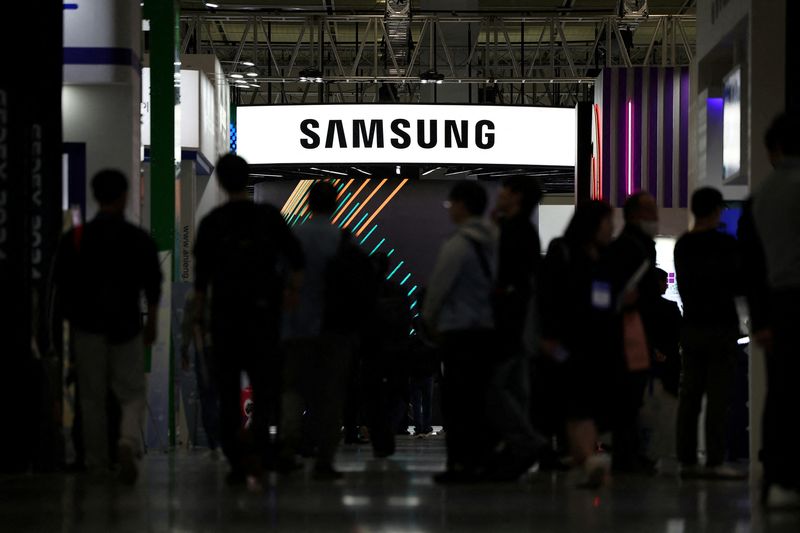
By Hyunjoo Jin and Heekyong Yang
SEOUL (Reuters) -Samsung Electronics sought to inject impetus into its memory and foundry chip units by appointing new leaders on Wednesday, as it scrambles to catch SK Hynix and Taiwan's TSMC in the booming AI chip market.
The world's biggest memory chipmaker reavowed its faith in semiconductor chief Jun Young-hyun by naming him co-CEO and bestowing direct control of its struggling memory chip business.
Samsung (KS:005930) also made U.S. chip head Han Jin-man president and head of its foundry business making customer-designed chips.
However, Samsung kept Chung Hyun-ho, second-in-command to Chairman Jay Y. Lee, as head of its Business Support Task Force and appointed a former CFO as Chung's deputy. That disappointed some analysts who argued for change among the biggest decision makers whose missteps they said made Samsung slow to embrace AI.
Samsung's share price closed down 3.4% as the reshuffle did little to calm concern about how the technology giant will navigate risk associated with the protectionist policies of U.S. President-elect Donald Trump.
Even before Trump's election triumph, Samsung's stock had been falling due to investor concern that it lags rivals as supplier to leading AI chip designer Nvidia (NASDAQ:NVDA).
Chip chief Jun takes on direct oversight of the memory chip business having headed the overall semiconductor division since May in an appointment Samsung said would tackle a "chip crisis".
Profit in the division plunged 40% in the third quarter from the second, with Samsung saying AI chip business had suffered a delay with a "major" customer - with analysts naming Nvidia as the likely customer. Samsung has since said it has made headway.
The extra responsibility indicates "Samsung is backing Jun's strategy to regain its competitiveness," said KB Securities' head of research Jeff Kim.
Still, with Chung remaining head of the Business Support Task Force - widely regarded as Lee's de facto secretariat involved in key decision-making - there are questions as to whether the reshuffle will address concerns about leadership, said Park Ju-gun, head of corporate analysis firm Leaders Index.
Joining the Business Support Task Force is President and CFO Park Hark-kyu, with a new CFO yet to be announced.
As well as catching up in AI and stemming a stock price decline, management has to contend with slowing profit growth and intensifying competition from Chinese rivals.
"I am fully aware that there are grave concerns about the future of Samsung recently," Chairman Lee said this week during a final hearing of an accounting fraud trial where he is a defendant. He has denied wrongdoing.
Wednesday's appointments also included a new chief technology officer of the foundry business and an executive tasked with finding new growth areas.
Samsung said the reshuffle is aimed at overcoming business uncertainty, revamping its organisation and raising the technological competitiveness of its chip business.
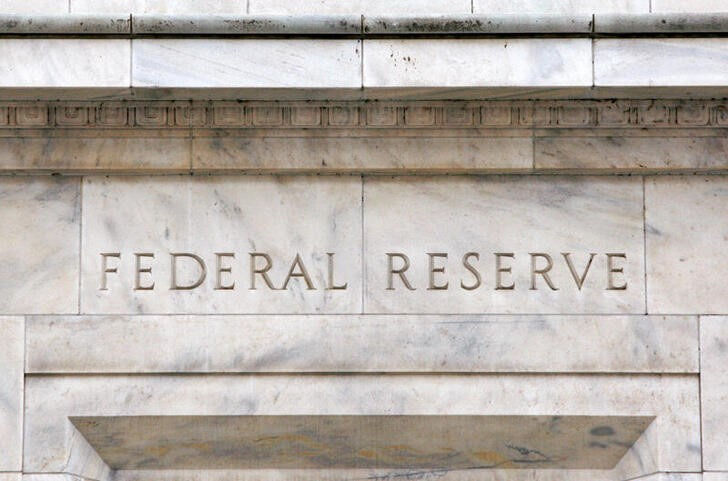
These doubts were furthered by the minutes of the Fed’s early-November meeting, released on Tuesday. The minutes showed that policymakers were divided over future rate cuts, and recommended a gradual easing in rates.
Tech gains help Wall St weather Trump tariff threat
Gains in heavyweight technology stocks saw Wall Street indexes rise past Trump’s tariff threats to hit record highs on Tuesday.
The S&P 500 rose 0.6% to a record high of 19,172.81 points, while the Dow Jones Industrial Average rose 0.3% to a record high of 44,860.31 points. The NASDAQ Composite rose 0.6% to 19,172.81 points, closing just below recent peaks.
Five of the Magnificent Seven stocks closed higher on Tuesday, led by an over 3% jump in Amazon.com Inc (NASDAQ:AMZN) after Bloomberg reported the firm plans to trim its dependence on NVIDIA Corporation (NASDAQ:NVDA) by developing its own custom artificial intelligence chips.
After hours movers: HP, Dell slide
Among major aftermarket movers, HP Inc (NYSE:HPQ) slid 7.2% after it issued disappointing guidance for 2025, while Dell Technologies Inc (NYSE:DELL) tumbled 10% after its quarter revenue missed some estimates.
Autodesk Inc (NASDAQ:ADSK) shed nearly 10% even as its earnings beat estimates, while Workday Inc (NASDAQ:WDAY) fell 8% on disappointing guidance.
“One risk to the outlook is potential tariff increases, most of which we would expect to be passed along to consumers. However, we would expect tariffs to cause a one-time increase in the price level rather than triggering sustained higher inflation over the medium term,” UBS said.
UBS said the Fed was more likely to leave rates near 4% if inflation remained sticky.
On the U.S. policy front, UBS uncertainty was “unusually high” ahead of Trump’s inauguration on January 20.
While the Republicans did maintain a slim lead in both chambers of Congress, it still remained to be seen if they could pass the sweeping policy changes promised by Trump.
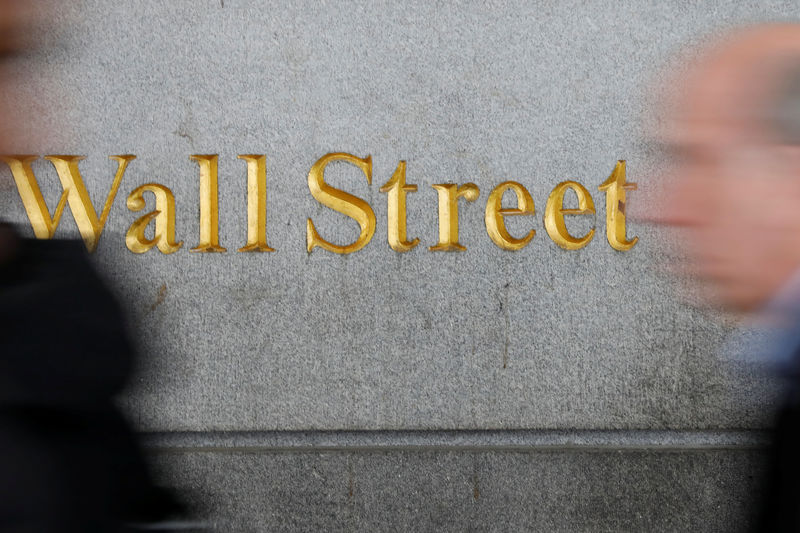
Investing.com-- U.S. stock index futures steadied on Tuesday evening after a positive session on Wall Street, with focus turning squarely to upcoming inflation data that is likely to factor into the outlook for interest rates.
Futures steadied after a positive session on Wall Street, as gains in technology stocks helped offset concerns over increased import tariffs under President-elect Donald Trump, after he threatened to impose more tariffs on China, Canada, and Mexico.
Investors were also digesting a mixed outlook on U.S. interest rates, after the minutes of the Federal Reserve’s November meeting showed policymakers were divided over future rate cuts.
S&P 500 Futures rose 0.1% to 6,041.50 points, while Nasdaq 100 Futures steadied at 20,989.25 points by 18:17 ET (23:17 GMT). Dow Jones Futures rose 0.1% to 44,986.0 points.
Trading volumes are expected to be muted in the remainder of the week, with the Thanksgiving holiday on Thursday.
PCE inflation data awaited for more rate cues
Focus on Wednesday will be on PCE price index data for October, due at 10:00 AM ET (03:00 GMT).
The reading is the Fed’s preferred inflation gauge, and is likely to factor into the central bank’s plans to cut interest rates further.
Core PCE price index data is also expected to have risen steadily in October and remained above the Fed’s 2% annual target.
Recent signs of sticky U.S. inflation sparked some doubts over just how much the Fed will cut interest rates further. Markets also began questioning the prospect of a 25 basis point cut in December.
These doubts were furthered by the minutes of the Fed’s early-November meeting, released on Tuesday. The minutes showed that policymakers were divided over future rate cuts, and recommended a gradual easing in rates.
Tech gains help Wall St weather Trump tariff threat
Gains in heavyweight technology stocks saw Wall Street indexes rise past Trump’s tariff threats to hit record highs on Tuesday.
The S&P 500 rose 0.6% to a record high of 19,172.81 points, while the Dow Jones Industrial Average rose 0.3% to a record high of 44,860.31 points. The NASDAQ Composite rose 0.6% to 19,172.81 points, closing just below recent peaks.
Five of the Magnificent Seven stocks closed higher on Tuesday, led by an over 3% jump in Amazon.com Inc (NASDAQ:AMZN) after Bloomberg reported the firm plans to trim its dependence on NVIDIA Corporation (NASDAQ:NVDA) by developing its own custom artificial intelligence chips.
After hours movers: HP, Dell slide
Among major aftermarket movers, HP Inc (NYSE:HPQ) slid 7.2% after it issued disappointing guidance for 2025, while Dell Technologies Inc (NYSE:DELL) tumbled 10% after its quarter revenue missed some estimates.
Autodesk Inc (NASDAQ:ADSK) shed nearly 10% even as its earnings beat estimates, while Workday Inc (NASDAQ:WDAY) fell 8% on disappointing guidance.

Investing.com-- China's economic outlook for 2025 remains clouded by weak domestic demand and mounting deflationary pressures, despite a recent uptick in expectations for policy stimulus, according to Bank of America (BofA) analysts.
While the country has benefited from a technology product upcycle and resilient demand from the global south, consumer and investor confidence remains subdued, exacerbated by a struggling property market.
BofA analysts, in a research note, revised their forecast for China's GDP growth to 4.5% in 2025, down from 4.8% in 2024. While the Chinese government continues to target a 5% growth rate for the final year of its 14th Five-Year Plan, achieving this goal will hinge on both the effectiveness of domestic stimulus measures and the external pressures posed by escalating trade tensions, particularly with the U.S..
China’s policymakers have signaled a pivot toward more aggressive fiscal and monetary easing. Since late September, a series of modest stimulus measures have been rolled out, including increased fiscal expenditure and efforts to stabilize the property market. Analysts believe these steps reflect a shift in policy orientation, with top leadership prioritizing economic stabilization over structural reforms.
In its base case, BofA anticipates that the U.S. will increase tariffs on Chinese goods in 2025, raising rates from 20% to 30% in the second quarter and up to 40% by the end of the year. Should these tariffs materialize, China is expected to counter with a range of policy responses, including widening the fiscal deficit to 3.5% of GDP, increased bank capital injections, and further interest rate cuts. Additionally, the People's Bank of China (PBoC) may deploy its targeted lending tools to support the property sector, which remains a key drag on overall growth.

WASHINGTON (Reuters) - Sales of new U.S. single-family homes dropped to the lowest level in nearly two years in October, likely as a rise in mortgage rates drove buyers to the sidelines and hurricanes disrupted activity.
New home sales plunged 17.3% to a seasonally adjusted annual rate of 610,000 units last month, the lowest level since December 2022, the Commerce Department's Census Bureau said on Tuesday. The sales pace for September was unrevised at a rate of 738,000 units.
Economists polled by Reuters had forecast new home sales, which account for about 15% of U.S. home sales, would ease to a pace of 725,000 units. New home sales are counted at the signing of a contract, and can be volatile on a month-to-month basis. They dropped 9.4% year-on-year in October.
Mortgage rates have reversed all of the decline that had pushed them to more than a 1-1/2-year low of 6.08% at the end of September after Federal Reserve began cutting interest rates.
The average rate on a 30-year fixed-rate mortgage jumped to 6.72% by the end of October, tracking a rise in the 10-year U.S. Treasury yields, which have increased on strong domestic data that have suggested a slower path of rate cuts from the U.S. central bank.
Expectations of fewer rate cuts next year have also been strengthened by fears of a resurgence in inflation. President-elect Donald Trump said on Monday he would impose a 25% tariff on all products from Mexico and Canada, and an additional 10% tariff on goods from China, on his first day in office.
The 30-year fixed-rate mortgage averaged 6.84% last week.
New home sales tumbled 27.7% in the densely populated South, likely as hurricanes disrupted activity. They dropped 9.0% in West, but rose 1.4% in the Midwest and soared 53.3% in the Northeast.
The median new house price increased 4.7% to $437,300 in October from a year earlier. The inventory of new homes increased to 481,000, the highest level since early 2008, from 471, 000 units in September.
At October's sales pace it would take 9.5 months to clear the supply of houses on the market, up from 7.7 months in September.
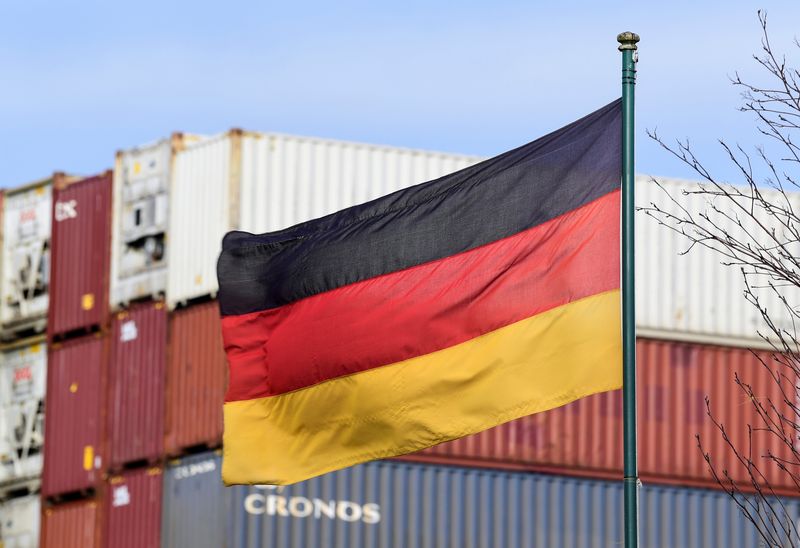
BERLIN (Reuters) - The mood in Germany's export industry improved slightly in November as companies, generally cautious about foreign business developments, wait to see which trade policies U.S. President-elect Donald Trump will implement, a survey said on Tuesday.
The Ifo economic institute's indicator for export expectations rose to minus 5.9 points in November from minus 6.5 points in October, the first increase in six months.
"Companies are unsettled but are still waiting to see which trade policy Trump will ultimately implement," said Klaus Wohlrabe, head of Ifo surveys.
"In addition, the dollar has appreciated strongly since the election, which may benefit exporters," he added.
Some analysts assume that German deliveries to the United States could initially increase in the coming months as companies there try to order goods before the possible introduction of tariffs, which would make them more expensive.
Trump, who announced plans for drastic tariff increases on imports from Canada, Mexico and China on Monday, had said during his election campaign that he would place high tariffs on goods from the European Union.
That would hit the already lagging German economy particularly hard as the U.S. is the largest buyer of its goods.
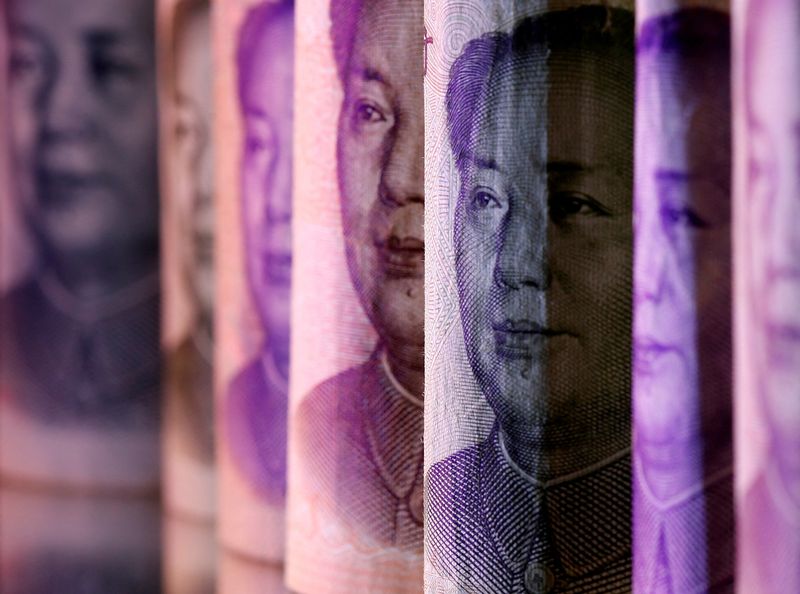
SHANGHAI (Reuters) - The yuan fell against the U.S. dollar to its weakest in nearly four months after U.S. President-elect Donald Trump said he would impose a 25% tariff on all products from Mexico and Canada, and an additional 10% tariff on goods from China.
Offshore yuan dropped roughly 0.3% on the news to 7.2730 per dollar, its lowest since July 30, while onshore yuan also fell after the market opening.
"The directional impact is clear for the yuan – weaker – but Chinese authorities will be nervous about devaluing too much and encouraging outflows," said Ben Bennett, head of investment strategy for Asia at LGIM.
Prior to the market opening, the People's Bank of China (PBOC) set the midpoint rate, around which the yuan is allowed to trade in a 2% band, at 7.1910 per dollar, which was 450 pips firmer than the Reuters' estimate.
The effectiveness of the fixing as a tool to manage yuan depreciation expectations is limited, said analysts at Nomura in a note.
"We believe that, if onshore spot USD/CNY rises above the 7.30 level, market activity will shift where USD demand strengthens versus sellers," the Nomura analysts said, adding that this will present a challenge to authorities if they don't allow the yuan fixing to get weaker.
Nomura suggested to go long dollar against the offshore yuan.
The spot yuan opened at 7.2524 per dollar and was last trading 105 pips lower than the previous late session close at 7.2553 as of 0239 GMT.
Actual tariff announcements and negotiations will drive the yuan in coming quarters, said Liang Ding, an analyst at research firm Macro (BCBA:BMAm) Hive.
"Given the 'promise made, promise kept' rhetoric of the Trump campaign, markets may begin to price in additional risk premia related to the second trade war as Trump’s inauguration approaches," Ding said.
During Trump's first term as president, the yuan weakened about 5% against the dollar after the initial round of U.S. tariffs on Chinese goods in 2018, and fell another 1.5% a year later when trade tensions escalated.
As part of his pitch to boost American manufacturing during the recent election campaign, Trump said he would impose tariffs of 60% or more on goods from China.
The proposed tariffs, as well as other policies such as tax cuts, are seen as inflationary and likely to keep U.S. interest rates relatively high, hurting currencies of U.S. trading partners.
The dollar's six-currency index was 0.075% lower at 107.27.
LEVELS AT 02:39 GMT
INSTRUMENT CURRENT UP/DOWN( % DAY'S DAY'S
vs USD -) VS. CHANGE HIGH LOW
PREVIOUS YR-TO-
CLOSE % DATE
Spot yuan 7.2553 -0.21 -2.12 7.2466 7.2568
Offshore 7.2629 -0.24 -1.91 7.2518 7.273
yuan spot
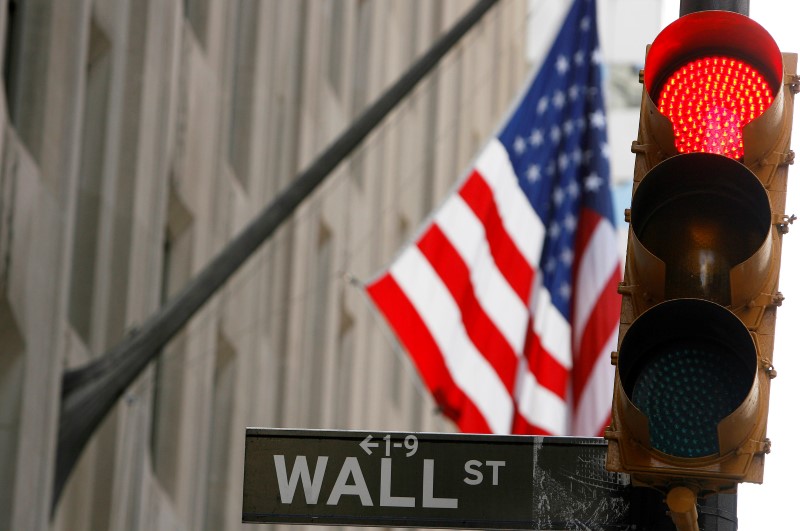
Investing.com-- U.S. stock index futures fell on Monday evening after President-elect Donald Trump threatened to impose higher import tariffs on China, Canada and Mexico on concerns over illegal drugs and immigration.
S&P 500 Futures fell 0.3% to 5,989.75 points, while Nasdaq 100 Futures fell 0.3% to 20,817.75 points by 19:03 ET (00:03 GMT). Dow Jones Futures fell 0.3% to 44,707.0 points.
Futures reversed initial gains after Trump’s threat, which cut short momentum from a positive session on Wall Street. U.S. stock benchmarks hit record highs on Monday as investors cheered the nomination of Scott Bessent as Treasury Secretary, while flows into cyclical sectors persisted.
Risk appetite was also supported by reports that a ceasefire between Israel and Lebanon was close, which saw oil prices fall sharply.
Trump threatens more tariffs
Trump said in a social media post that he will impose an additional 10% tariff on all Chinese imports, citing a lack of progress on China’s part towards curbing the flow of illegal drugs into the U.S.
His threat follows promises during his campaign that he will impose a 60% tariff on all Chinese goods.
Additionally, Trump also said he will impose a 25% tariff on all imports from Canada and Mexico over inflows of allegedly illegal immigrants and drugs into the U.S. through open borders with the two countries.
Trump’s tariff threats ramped up concerns over a renewed global trade war between the world’s biggest economies- a trend seen through much of his first term. Such a scenario bodes poorly for global trade, especially for countries with heavy trade exposure to the U.S.
The dollar and Treasury yields surged on Trump’s tariff threats.
Wall St hits record highs on Treasury nomination
Losses in Wall Street futures came after a positive session on Monday, after Trump’s nomination of Bessent was welcomed by investors.
Bessent- a seasoned investor- is expected to push for more tax reforms for U.S. firms, and is also expected to have a more moderate view on trade tariffs.
Wall Street was also buoyed by a steady pivot into economically sensitive sectors, as markets bet on more expansionary policies under a Trump administration.
The Dow Jones Industrial Average was an outperformer among its peers, rising 1% to a record high of 44,746.57 points on Monday. The S&P 500 rose 0.3% to 5,987.37 points, while the NASDAQ Composite rose 0.3% to 19,054.89 points.
Trading volumes are expected to be muted this week, on account of the Thanksgiving holiday.
But focus is also on key upcoming economic data, with PCE price index data- the Federal Reserve’s preferred inflation gauge- due on Wednesday.
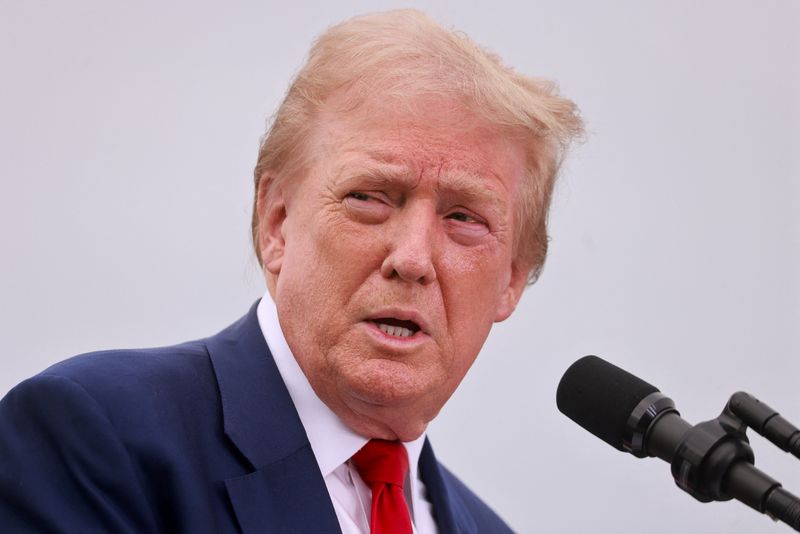
Investing.com-- President-elect Donald Trump said on Monday that he will impose an additional 10% tariff on all Chinese imports to the U.S. to pressure Beijing into curbing the flow of illegal drugs into the country.
Trump said in a post on Truth.social that he had held numerous talks with Chinese officials over curbing the supply of drugs, particularly fentanyl, to the U.S.
But he claimed that such talks had not yielded any results, and that “drugs were still pouring into our country, mostly through Mexico, at levels never seen before.”
“Until such time as they stop, we will be charging China an additional 10% Tariff, above any additional Tariffs, on all of their many products coming into the United States of America,” Trump said.
Trump had threatened to impose an up to 60% tariff on all Chinese goods, a move that could potentially spark a renewed trade war between the world’s biggest economies.
Trump threatens tariffs on Canada, Mexico over immigration
Trump also said on Monday that he will impose a 25% tariff on all imports from Canada and Mexico, citing concerns over allegedly illegal immigrants coming into the U.S. through the countries.
Trump said he will impose the tariffs “as one of my many first executive orders” when he takes office on January 20.
“This Tariff will remain in effect until such time as Drugs, in particular Fentanyl, and all Illegal Aliens stop this Invasion of our Country! Both Mexico and Canada have the absolute right and power to easily solve this long simmering problem,” Trump said in a Truth.Social post.
The President-elect had campaigned on promises of protectionist policies towards trade and immigration- carrying over his rhetoric from his first term, which had seen increased U.S. import tariffs on several trading partners.

(Reuters) -Lawmakers in the U.S. House of Representatives have asked Treasury Secretary Janet Yellen to rethink ties with Hong Kong's banking sector, saying the city has become a top location for money laundering and sanctions evasion.
Hong Kong has turned into a hub for many violations of U.S. trade controls, including export of controlled Western technology to Russia and the creation of front companies to buy Iranian oil, the bipartisan leaders of the House of Representatives Select Committee on the Chinese Communist Party said in a letter to Yellen.
The letter, scheduled to be publicly released on Monday, said that Hong Kong has shifted from being a trusted global financial center to a critical player in the deepening authoritarian axis of China, Iran, Russia and North Korea.
"We must now question whether longstanding U.S. policy towards Hong Kong, particularly towards its financial and banking sector, is appropriate," a copy of the letter seen by Reuters said.
The letter, signed by Republican John Moolenaar, who chairs the committee, and Raja Krishnamoorthi, the committee's ranking Democrat, cited research that shows nearly 40% of goods shipped from Hong Kong to Russia in 2023 were high-priority items such as semiconductors that Russia could use to prosecute its war in Ukraine.
The U.S. Treasury Department did not immediately respond to Reuters' requests for comments. Hong Kong's trade office in New York could not be immediately reached for comment

